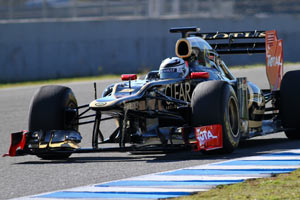kilcoo316 wrote:Tyler wrote:I would really appreciate it if someone would explain the whole process of how the chassis gets built as well as how many and at what stage and how it fits in with the crash tests and just the general timeline of things.
Is it usual for a team to build 3 chassis'?
I can't give you the lead-times... but the basic process would be:
0. Discuss previous year's chassis with all departments to evaluate areas that were weak, what needs improving etc.
1a. Get an outer mould line from the aero-heads.
1b. Get suspension points, target torsional rigidities and wheelbase from the vehicle dynamics guys (who will also talk to aero-heads constantly during this).
1c. Get ancillary interfaces from the other design people (engines/systems etc)
2. Starting from your front suspension and rear-bulkhead, produce initial draft design from fore/aft to centre, using the likes of CATIA, Fibresim and Altair HyperWorks. CATIA and Fibresim will hold your geometric and laminate information (including the real drape angles of the plies), which is then simulated in the FEA using Hyperworks (or another package).
3. Iterate (2) until your reasonably happy you meet the requirements laid down in (1).
4. Report areas of dis-satisfaction to aero-heads/vehicle dynamics/systems etc to see if compromises can be made.
5. Iterate (3) varying the requirements given in (1) until all departments are happy with the tub. With an integrated engine, you can expect the engine pick-up points to move around to aid overall torsional rigidity/kg.
The overall objective is to maximise torsional rigidity while minimising tub weight. I'm not sure if the polar moment of inertia is considered such a sensitive variable anymore.
6. Build initial tub and crash tub.
7. Test initial tub in first track test.
8. Initial tub becomes 7-post rig chassis, 2nd tub becomes reserve race chassis. 3rd tub becomes 1st race chassis. 4th tub becomes 2nd race chassis.
The teams will build many more than just 3 tubs during the year.




